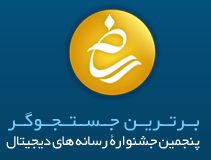عنوان
پدید آورنده
موضوع
رده
کتابخانه
محل استقرار
شماره کتابشناسی ملی
شماره
TLpq2354147784
زبان اثر
زبان متن نوشتاري يا گفتاري و مانند آن
انگلیسی
عنوان و نام پديدآور
عنوان اصلي
The Use of Computer-Assisted Translation Tools for Arabic Translation:
نام عام مواد
[Thesis]
نام نخستين پديدآور
Alanazi, Mohammad S.
عنوان اصلي به قلم نويسنده ديگر
User Evaluation, Issues, and Improvements
نام ساير پديدآوران
Wright, Sue Ellen
وضعیت نشر و پخش و غیره
نام ناشر، پخش کننده و غيره
Kent State University
تاریخ نشرو بخش و غیره
2019
مشخصات ظاهری
نام خاص و کميت اثر
368
یادداشتهای مربوط به پایان نامه ها
جزئيات پايان نامه و نوع درجه آن
Ph.D.
کسي که مدرک را اعطا کرده
Kent State University
امتياز متن
2019
یادداشتهای مربوط به خلاصه یا چکیده
متن يادداشت
The development of technology since the last quarter of the 20th century has played a momentous role in shaping the translation process for most languages. The Arabic language, however, has encountered challenges and difficulties to catch up with the accelerated changes in computer-assisted translation tools. Those challenges have been examined and investigated extensively during the last decade. However, these tools evaluations made by Arabic language translators have not been adequately taken into consideration in the previous studies. The challenging morphological, syntactic, phonetic, and phonologic characteristics of Arabic language make it one of the most complicated languages for the use of developed translation technology, which can explain a potentially understandable negative assessment among Arabic language translators. This study examined Arabic language translators' evaluation of computer-assisted translation tools and investigated potential problems that can possibly complicate the use of the tools. Finally, the study discussed factors to take into consideration when developing computer-assisted tools to address Arabic language translators' needs. The study hypothesized that Arabic language translators would express concerns regarding language-specific issues during the use of the tools. Complications would occur for Arabic language translators while working with these applications, e.g. MT suggestions, segmentation, punctuation and script related issues etc. To test the study's hypothesis, a mixed methodological approach was pursued that combines the following: an online survey and an observational experiment. Arabic language translators were recruited to participate in the study. A mixed approach of quantitative and qualitative analysis of the collected data were conducted to demonstrate the responses and evaluation of the participants toward the tools. The results of the study reveal a strong inclination by Arabic language translators in this study to encourage and support the use of CAT tools despite the complications (e.g., segmentation, punctuation and spelling etc.) and suggest that Arabic language translators are more likely to make changes to TM and extensive post-editing to MT suggestions. Triangulation of the survey and experiment findings supports the conclusion that there is no relationship between the complications experienced while using translation tools and the expressed level of satisfaction.
موضوع (اسم عام یاعبارت اسمی عام)
موضوع مستند نشده
Computer science
موضوع مستند نشده
Language
موضوع مستند نشده
Linguistics
نام شخص به منزله سر شناسه - (مسئولیت معنوی درجه اول )
مستند نام اشخاص تاييد نشده
Alanazi, Mohammad S.
مستند نام اشخاص تاييد نشده
Wright, Sue Ellen
دسترسی و محل الکترونیکی
نام الکترونيکي
 مطالعه متن کتاب
مطالعه متن کتاب وضعیت انتشار
فرمت انتشار
p
اطلاعات رکورد کتابشناسی
نوع ماده
[Thesis]
کد کاربرگه
276903
اطلاعات دسترسی رکورد
سطح دسترسي
a
تكميل شده
Y
